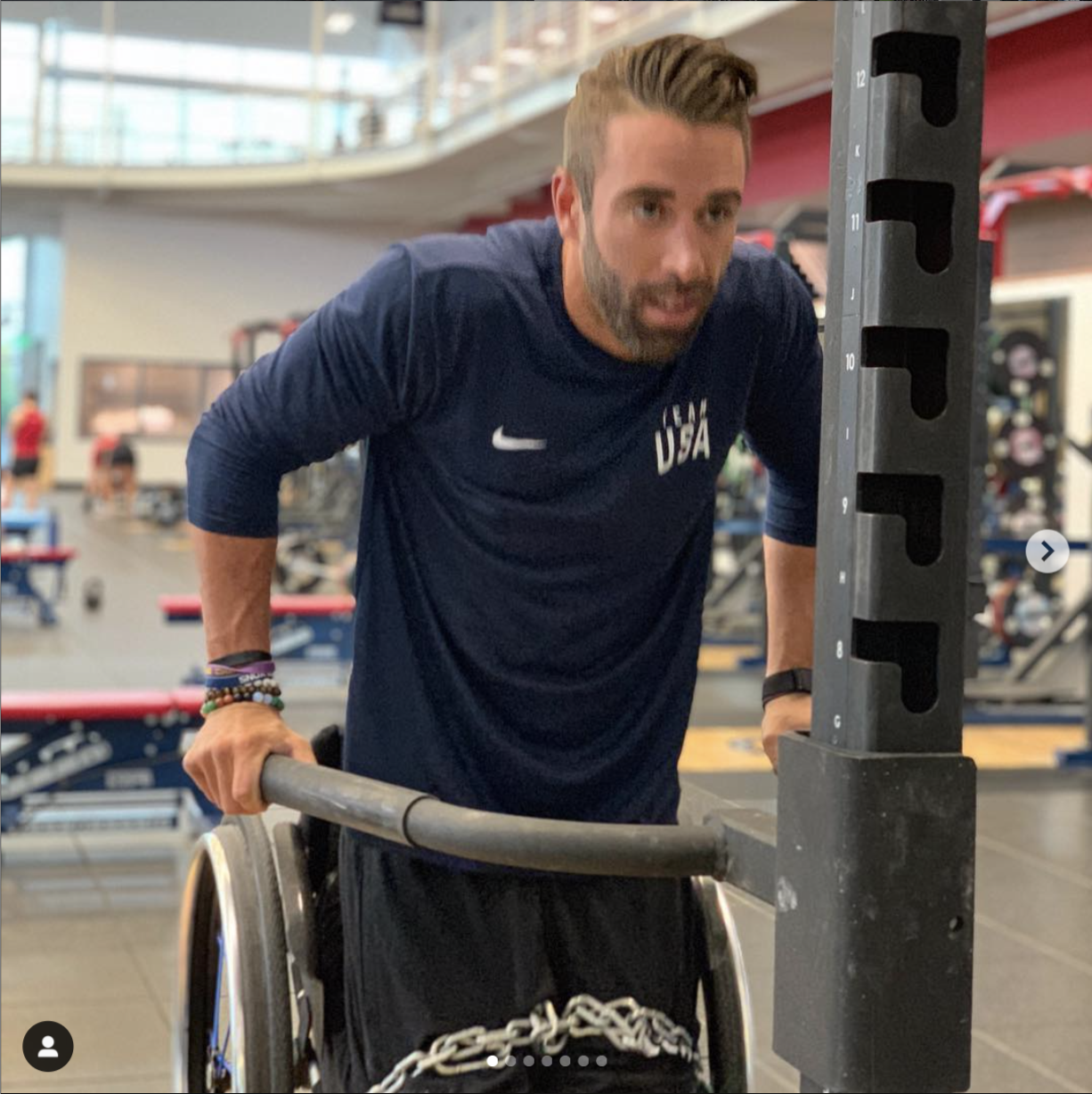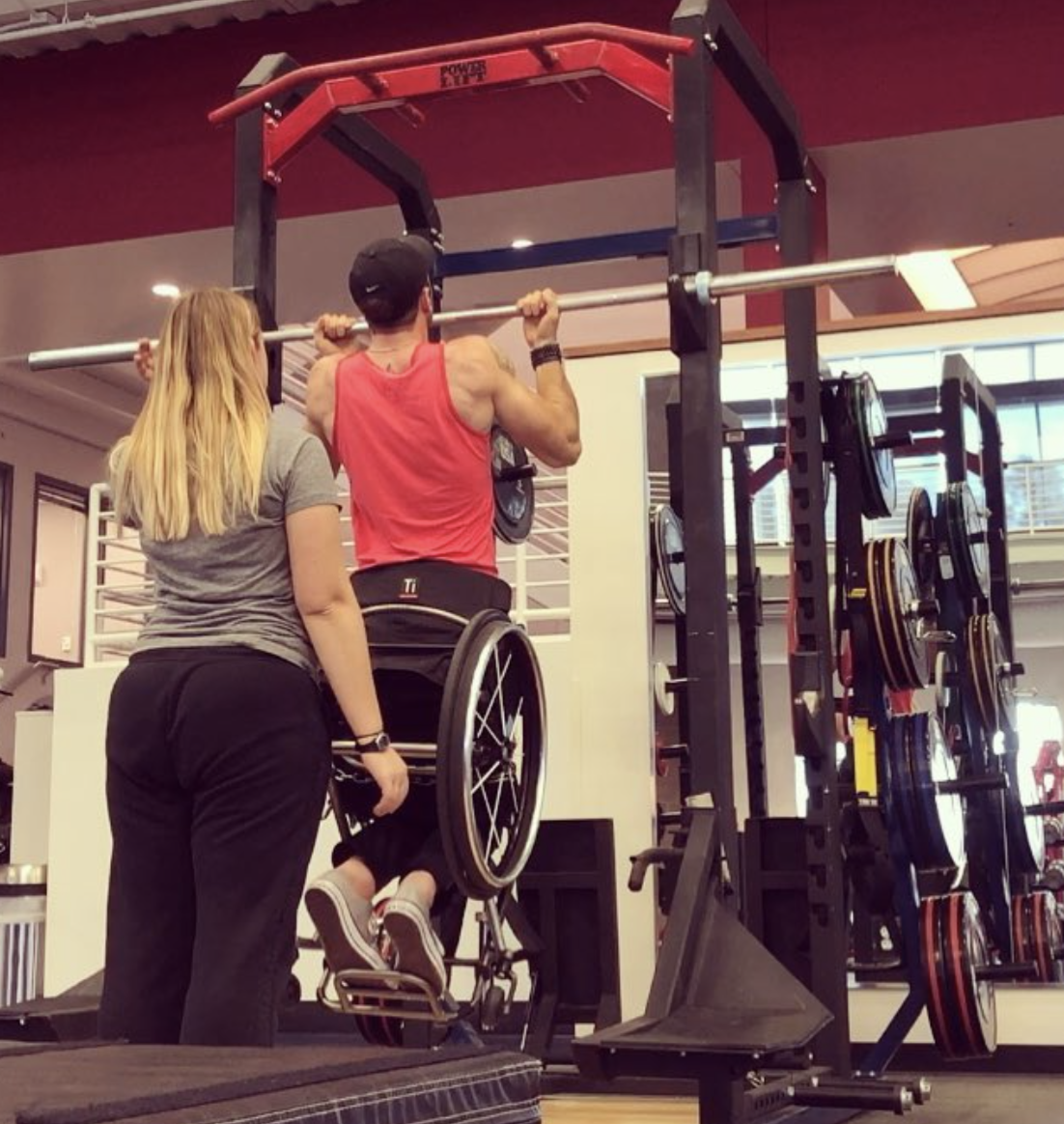U.S. Paralympic Project
/Celebrating the Beauty and Strength of People with Disabilities Through Art
Perhaps you've felt as captivated and thrilled as I have since childhood while watching spectacular moments in Olympic competition. The talent, athleticism and determined mindset of the competitors are awe inspiring, as is the convening of different cultures from around the world. Yet never have I felt as thrilled or gratified as I have while creating sculptures with Paralympians for the U.S. Olympic & Paralympic Visitor Center in Colorado Springs.
About two years ago, I had visions of a new way to make art, a process that combines my love of sculpting, painting and portraying humanity, with an immediate medium of expression: painted sculptures formed directly from fabric draped over the bodies of posed models. It took a year to find the courage to invent my formula and method, build a body of new work and then introduce and share it with the art world.
My first opportunity to create and exhibit my unique sculptures, and my first public art, was in 2018 with Colorado Ballet at its Armstrong Center for Dance. It was and is a great honor and pleasure to create with those dancers! During that time, I had the privilege getting to know several persons with disabilities. I started thinking about how fascinating it could be to juxtapose sculptures of them alongside the sculptures ballet dancers to show the strength and beauty of the human form in all of its diversity. This would help me bring together two of my passions: art and inclusivity. I just needed to connect with Paralympic athletes who could model and collaborate with me.
Meet the Paralympians
Fortunately my answer came when I was connected with U.S. Paralympic athletes. A wonderful Denver gallery owner and photographer, Robert Anderson, suggested that I contact the U.S. Olympic & Paralympic Training Center. Because my art was a strong match for the mission of its Training Center Visitor Center in Colorado Springs, they got back to me immediately.
While waiting there for my first meeting, I happened to meet Sophia Herzog, the multi-medalist and world record-holding swimmer in the Para breaststroke – and a tour guide at the center. She became my first Paralympian art model and unexpectedly opened a huge door to the world of Paralympians and people with disabilities. She also has a strongly shaped figure that would show beautifully in the art.
After Sophia's painted sculpture was completed, I had the pleasure of creating art with Paralympian hand-cyclist Brandon Lyons and Para triathlete/cyclist Mohamed Lahna.
As I talked with and learned from these athletes, I started to see some trends. Here are some common characteristics that I discovered in them:
1. They must train as hard, if not harder, and have a mindset as strong as any Olympic or professional athlete. Watch Sophia workout Watch Mohamed workout Watch Brandon workout
2. They are more comfortable in their skin than anyone I know (including myself). They are also very outgoing and welcoming.
3. The primary reason for their athletic pursuit is not to prove something to others or promote a cause, but for the sheer joy of accomplishment and competition. That, and the opportunity to travel internationally.
4. They “pay it forward” by sharing their experiences, participating in disability events, fulfilling Visitor Center requests and more. Besides training, competing and volunteering, Mo Lahna also parents his young children and Sophia is finishing a college degree.
I enjoyed being around them, and I’m hoping their superb attitude and personalities will rub off on me. And it was nice to notice some characteristics we have in common: a clear vision of what we want to accomplish, an attraction to big challenges, courage to put ourselves out there, unstoppable determination, and with Sophia, a shared enjoyment of making art. To know Sophia, Brandon and Mohamed is to love them. I will always treasure the memories of working with them.
The Training Center Visitor Center Promotes Disability Awareness
Another aspect of this project that I was pleasantly surprised by is the role the U.S. Olympic and Paralympic Committee plays in promoting inclusion, support and awareness of issues around living with disabilities. Leading by example, they recently added "Paralympic" to their name to acknowledge the equality – and equal quality – of those athletes. That act means a lot to the Paralympians and all persons with disabilities.
The USOPC also employs Paralympians such as Sophia Herzog and other persons with disabilities to be receptionists and tour guides at the Visitor Center. This gives people who might not otherwise interact with Paralympians or anyone with disabilities an opportunity to do so. What a marvelous way to get people interacting with people they might otherwise avoid. It adds a richness and connection to the tour experience while exemplifying inclusion.
Creating the Art
As I thought about how best to approach the Paralympian project, I decided that I had to make it more pictorial than any of my previous work. Yet the sculptures could not be mere boring replicas. These sculptures had to look real enough for viewers to really see and connect with the athletes, yet artistic enough to leave some things to the imaginations of the viewers. The new artistic challenge in this pictorial approach was painting 3D figures. What looks correct from the front view can look completely wrong from a side view or vice versa. I worked fastidiously to get the balance right, and was relieved that I was able to do it.
The best endorsement we've received is when Sophia and I were carrying her sculpture into the Visitor Center. People in the parking lot did a double take and wandered over, exclaiming, "What is that?" They followed us inside along with other curious visitors who were on their way out. When we mounted it temporarily on an easel, all were absolutely fascinated and wanted to take and share lots of pictures of us with the art. At that moment, we knew the project would be a hit!
Goals
I’m delighted that the center has installed three sculptures in the visitor center, and I hope that this project opens up opportunities for me to create similar projects featuring people with disabilities. I also hope to find a way to use my art to support athlete Brandon Lyons' goal to become part of the clinical trials for epidural stimulation so that he and thousands of others with spinal cord injuries can regain use of their entire bodies.
Lastly, I hope to attend the 2021 Tokyo Paralympic Games so I can cheer on my Paralympian art teammates. I've become hooked on Paralympic competition – locally, nationally and the big one.
Join Us
As I worked with the talented USOPTC and former Sesame Street Live technician, Michael Lucas, to install the legacy Paralympian sculptures at the entrance to the Visitor Center amphitheater, I was moved by hearing the soaring Olympic symphonic theme music, plus recorded historical announcers and crowd-cheering playing inside the circular surround-sound-and-movie theater.
At that moment I realized that the Paralympian's accomplishments and victories are everyone’s victory. They are a shining light in how far our society has come with inclusiveness and how much we can still gain. Expanding inclusiveness gives us all the satisfaction of winning big.
I encourage you to visit the free U.S. Olympic Training Center so you also may enjoy the wonderful experience that I've had there. And while you're at it, buy one or more Paralympics T-shirts, etc. online. Let's wear it proudly to share and show our support for these incomparable athletes.
Follow the athletes and their mission on Instagram @USParalympics
Follow the conversation #SculptingPara #SculptingSophia #SculptingBrandon #Sculpting Mohamed
Learn more from my individual Paralympian model “News” blogs and see the sculptures on my “Art” page.

















